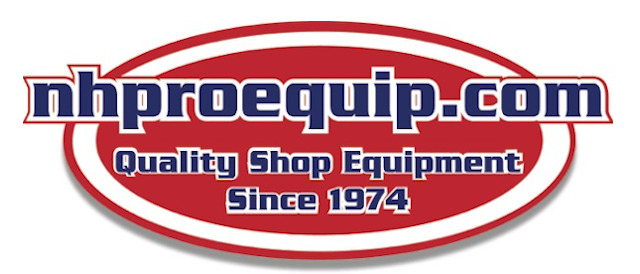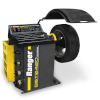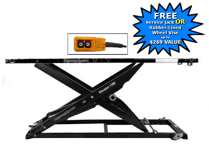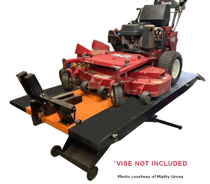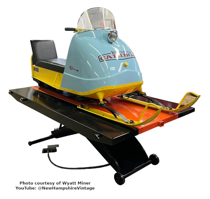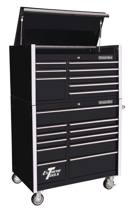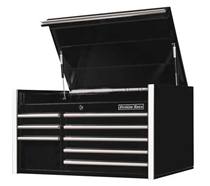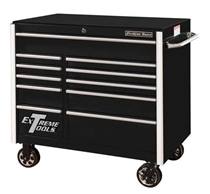- Register
- Log in
- Wishlist (0)
- My Cart (0) You have no items in your shopping cart.
What is Sandblasting? What is sodablasting? Different Types of Abrasive Blasting and Why They Are Used
Sandblasting and Sodablasting are both forms of Abrasive blasting, which is the operation of forcibly propelling a stream of abrasive material against a surface under high pressure to smooth a rough surface, roughen a smooth surface, shape a surface, or remove surface contaminants. The first abrasive blasting process was patented by Benjamin Chew Tilghman on October 18, 1870.
There are several variants of the process, such as bead blasting, sandblasting, and sodablasting.
Bead blasting is the process of removing surface deposits by applying fine glass beads at a high pressure without damaging the surface. It is used to clean calcium deposits from pool tiles or any other surfaces, and removes embedded fungus and brighten grout color. It is also used in auto body work to remove paint.
In Wheel Blasting, a wheel uses centrifugal force to propel the abrasive against an object. It is typically categorized as an airless blasting operation because there is no propellant (gas or liquid) used. A wheel machine is a high-power, high-efficiency blasting operation with recyclable abrasive (typically steel or stainless steel shot, cut wire, grit or similar sized pellets). Specialized wheel blast machines propel plastic abrasive in a cryogenic chamber, and is usually used for deflashing plastic and rubber components. The size of the wheel blast machine, and the number and power of the wheels vary considerably depending on the parts to be blasted as well as on the expected result and efficiency. The first blast wheel was patented by Wheelabrator in 1932.
Hydro-Blasting, commonly known as water blasting, is commonly used because it usually requires only one operator. In hydro-blasting, a highly pressured stream of water is used to remove old paint, chemicals, or buildup without damaging the original surface. This method is ideal for cleaning internal and external surfaces because the operator is generally able to send the stream of water into places that are difficult to reach using other methods. Another benefit of hydro-blasting is the ability to recapture and reuse the water, reducing waste and the impact on the environment.
Micro-Abrasive Blasting is dry abrasive blasting process that uses small nozzles (typically 0.25 mm to 1.5 mm diameter) to deliver a fine stream of abrasive accurately to a small part or a small area on a larger part. Generally the area to be blasted is from about 1 mm2 to only a few cm2 at most. Also known as pencil blasting, the fine jet of abrasive is accurate enough to write directly on glass and delicate enough to cut a pattern in an eggshell. The abrasive media particle sizes range from 10 micrometres up to about 150 micrometres. Higher pressures are often required.
The most common micro-abrasive blasting systems are commercial bench-mounted units consisting of a power supply and mixer, exhaust hood, nozzle and gas supply. The nozzle can be hand-held or fixture mounted for automatic operation. Either the nozzle or part can be moved in automatic operation.
A Fully Automated Blasting System usually includes contained surface preparation and coating applications.
In Dry Ice Blasting air and dry ice are used and with the help of a huge mass and air pressure the parent material is cleaned without destroying the properties of the parent material.
Blasting Equipment
A Blast Cabinet is essentially a closed loop system that allows the operator to blast the part and recycle the abrasive. It usually consists of four components; the containment (cabinet), the abrasive blasting system, the abrasive recycling system and the dust collection. The operator blasts the parts from the outside of the cabinet by placing his arms in gloves attached to glove holes on the cabinet, viewing the part through a view window, turning the blast on and off using a foot pedal or treadle. Automated blast cabinets are also used to process large quantities of the same component and may incorporate multiple blast nozzles and a part conveyance system.
There are three systems typically used in a blast cabinet. Two, siphon and pressure, are dry and one is wet:
1. A Siphon Blast System (suction blast system) uses the compressed air to create vacuum in a chamber (known as the blast gun). The negative pressure pulls abrasive into the blast gun where the compressed air directs the abrasive through a blast nozzle. The abrasive mixture travels through a nozzle that directs the particles toward the surface or workpiece.
Nozzles come in a variety of shapes, sizes, and materials. Tungsten carbide is the liner material most often used for mineral abrasives. Silicon carbide and boron carbide nozzles are more wear resistant and are often used with harder abrasives such as aluminum oxide. Inexpensive abrasive blasting systems and smaller cabinets use ceramic nozzles.
1. In a Pressure Blast System, the abrasive is stored in the pressure vessel then sealed. The vessel is pressurized to the same pressure as the blast hose attached to the bottom of the pressure vessel. The abrasive is metered into the blast hose and conveyed by the compressed gas through the blast nozzle.
1. Wet Blast Cabinets use a system that injects the abrasive/liquid slurry into a compressed gas stream. Wet blasting is typically used when the heat produced by friction in dry blasting would damage the part.
Blasting Media
In the early 1900s, it was assumed that sharp-edged grains provided the best performance, but this was later demonstrated to not be correct.
Mineral: Silica sand is the most commonly used type of mineral abrasive. It tends to break up quickly, creating large quantities of dust, exposing the operator to the potential development of silicosis, a debilitating lung disease. To counter this hazard, silica sand for blasting is often coated with resins to control the dust. Using silica sand as an abrasive is not allowed in Germany or Portugal for this reason.
Another common mineral abrasive is garnet. Garnet is more expensive than silica sand, but if used correctly, will offer equivalent production rates while producing less dust and no safety hazards from ingesting the dust. Magnesium sulphate (kieserite) is often used as an alternative to baking soda.
Agricultural: Typically, crushed nut shells or fruit kernels. These soft abrasives are used to avoid damaging the underlying material such when cleaning brick or stone, removing graffiti, or the removal of coatings from printed circuit boards being repaired.
Synthetic: This category includes corn/wheat starch, sodium bicarbonate, and dry ice. These "soft" abrasives are also used to avoid damaging the underlying material such when cleaning brick or stone, removing graffiti, or the removal of coatings from printed circuit boards being repaired. Sodablasting uses baking soda (sodium bicarbonate) which is extremely friable, the micro fragmentation on impact exploding away surface materials without damage to the substrate.
Additional synthetic abrasives include process byproducts (e.g., copper slag, nickel slag and coal slag), engineered abrasives (e.g., aluminum oxide, silicon carbide aka carborundum, glass beads, ceramic shot/grit) and recycled products (e.g., plastic abrasive, glass grit).
Metallic: Steel shot, steel grit, stainless steel shot, cut wire, copper shot, aluminum shot, zinc shot.
Many coarser media used in sandblasting often result in energy being given off as sparks or light on impact. The colours and size of the spark or glow varies significantly, with heavy bright orange sparks from steel shot blasting, to a faint blue glow (often invisible in sunlight or brightly lit work areas) from garnet abrasive.
-courtesty of Wikipedia
